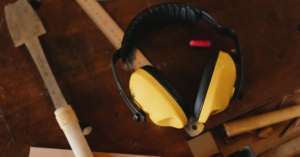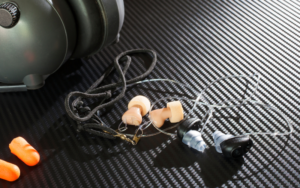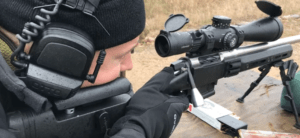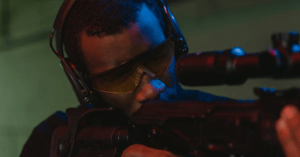Binoculars Buying Guide
If you want to find the best binoculars possible, image quality is of course one of the most important factors to take into account. That means that you will have to pay attention to the magnification factor, the use of coatings, and the object diameter.
You will also notice that there are many different types of binoculars and that the price tag can therefore vary a lot. It is therefore a particularly good recommendation to compare the various options equally thoroughly and not shy away from any offers.
Checkout the following top selling binoculars from OpticsPlanet.com:
How To Choose The Right Binoculars For Bird Watching
The nice thing about bird watching is that you can make your first attempts at observation without binoculars. Once the passion is awakened, it is easier to make the decision to buy high-quality binoculars straight away without having to worry about making a bad investment.
Every experienced hobby ornithologist will confirm those good binoculars are required for bird watching at the latest when determining the bird species.
Which Species Of Birds Do You Want To Observe?
As is so often the case, there is no such thing as the ideal pair of binoculars for bird watching. Much depends on the bird species that are to be observed.
Can you find them in large open areas such as fields or at great flight altitude? Do the desired bird species live in the forest?
Are they small, lively songbirds or large, quieter wading birds? All of these questions flow into the choice of suitable binoculars.
Therefore, you should inform yourself in detail about the bird species that you want to observe before starting your observation experience.
Enlargement
Many beginners in bird watching make the mistake of choosing binoculars with either too large or too small a magnification. While the observed bird species can no longer be recognized if the magnification is too small, if the magnification is too large, it causes completely different problems.
Experts, therefore, recommend binoculars with eight times magnification with which bird species can be observed in forests and fields or in the sky.
Incidence Of Light And Color Fidelity
 In addition to magnification, the incidence of light plays a major role. If there is too little light, pictures in binoculars appear darker and bird watching at dusk or in the forest becomes very difficult.
In addition to magnification, the incidence of light plays a major role. If there is too little light, pictures in binoculars appear darker and bird watching at dusk or in the forest becomes very difficult.
Basically, the larger the front lens, the greater the incidence of light. As a rule, a front lens with a diameter of 42 mm is recommended – so the binoculars can be handy and still allow a very good incidence of light.
When choosing your binoculars, pay attention to the high quality of the lenses, which should also have certain properties such as full multi-layer coating.
Practicality
If you are satisfied with the performance of your binoculars, there are a few more points that bird watchers should pay particular attention to when buying binoculars. For example, binoculars that are also to be taken on a bird watching tour should be very handy and light so that they can be easily transported.
It also has to be robust in order not to be damaged on bumpy roads. And then there is the problem of weather resistance.
How Do You Choose Binoculars For Hunting?
Good binoculars are essential in all types of hunting. There are even hunters who claim that binoculars are just as important as the rifle used to fire.
Binoculars that are used during hunting are mainly used to search the environment for possible prey. In addition, good binoculars are important to determine the sex and condition of an animal.
 This is important when it comes to trophies or if there is a restriction on shooting female or male games to prevent overpopulation. There are special viewers that are made with a camouflage color to stand out even less, this can make the difference between being seen and not being seen.
This is important when it comes to trophies or if there is a restriction on shooting female or male games to prevent overpopulation. There are special viewers that are made with a camouflage color to stand out even less, this can make the difference between being seen and not being seen.
The Brightness Of The Binoculars
The light intensity is an important part of a viewer that will be used during a hunt. Most hunting takes place in the early morning or in the evening, the light conditions are of course less optimal than during the day.
Binoculars with a large aperture are important to distinguish games during these times. There is of course also a limit to this.
Binoculars with a larger lens opening (40mm or larger) are generally also a lot heavier than the smaller variants that are around 26-20mm. Because there is also a limit to what we can all take with us, this must of course be chosen.
However, it remains the case that the larger the opening of the binoculars, the better it looks in low light. The contrast in larger binoculars is also better, making it easier to distinguish the different types of games.
Magnification And Angle Of View
Most people will think ‘If I have more magnification, then I also have better binoculars that are more suitable for what I do’. Unfortunately, this is not true, with more magnification the image moves much more, each movement becomes larger than with less magnification.
In addition, the angle of view also becomes smaller with more magnification. Especially with binoculars for hunting, a larger field of view is ideal, because it allows you to view the entire environment better and find the subject you are looking for faster.
For hunting in forested areas, binoculars with 8x magnification are easier to use than 10x or more. In addition, the aperture also determines the angle of view, binoculars with 8×42 have a larger view than 8×25 binoculars.
 When hunting in open plains, 10x binoculars are more suitable. If you are going to hunt on open plains or possibly in the mountains, then binoculars with 10 to 12x magnification are more suitable.
When hunting in open plains, 10x binoculars are more suitable. If you are going to hunt on open plains or possibly in the mountains, then binoculars with 10 to 12x magnification are more suitable.
In some situations even more, magnification will be required, but this is very rare. At a higher magnification, the field of view is much smaller, so it will take more time to view an entire area.
Build Quality
While hunting you will come across all kinds of conditions in terms of weather and environment, the build quality of the binoculars is of course important. Cheaper binoculars are often not made of metal but of plastic.
Many of the parts are made on budget quality; this means that under worse circumstances the viewer will show a cure earlier. Also, the cheaper binoculars are often not provided with good gas filling or coatings on the lenses, without which the viewer can fog up more quickly and suffer from dirt.
The coatings also help for correct color and contrast reproduction, the better the coatings, the better the image. With moderate coatings or no coatings at all, everything quickly becomes a knot where no distinction can be seen anymore.
Eye Relief And Eyepiece Caps
The eye relief of binoculars is important for use with glasses. The eye relief determines whether binoculars look fine.
If this is too large or too small for personal use, continuous black edges may be visible. The binoculars are then too far away from the eyes so that only small circles are visible.
The eye relief can always be found in the specifications of binoculars, but looking at this in practice is much better to make the right choice. Click here for the full explanation of eye relief.
The eyepiece covers also play a small role in viewing binoculars for hunting. There are binoculars with additional rubber flaps to keep out the unconscious image from outside the binoculars.
This is less distracting and provides better viewing and better results when searching for game. Some binoculars brands have this built-in as standard, with others this is a separate accessory that can be mounted on the eyepiece.
Rangefinder Binoculars
Binoculars with 8x magnification are good for wooded areas and 10x magnification or more is good for plains. In both categories of binoculars, there are models with a built-in rangefinder function, which can determine the distance to the subject with the help of a laser.
The distance will then be shown in the image, which can be very important when hunting (the scope on top of the rifle is also adjusted based on the distance). This information makes hunting a lot easier.
Because the distance is immediately available with the use of the binoculars, no separate specific rangefinder has to be purchased.
How To Choose The Right Size Binoculars
Size is known to matter. The lens “draws” the image and in order to show enough detail with good brightness it must have a decent diameter. Let’s consider the main standard sizes:
25mm – with such a diameter binoculars can show close objects well in the daytime, at twilight or at night this aperture is not enough. But its main advantage will be its amazing compactness, like the Delta Optical Active 10×25 model.
 Such models are suitable for both a child and an ultralight tourist, due to their small size and weight. This size of high-quality binoculars range from $35 to $235.
Such models are suitable for both a child and an ultralight tourist, due to their small size and weight. This size of high-quality binoculars range from $35 to $235.
30-40mm – is a good size lens for portable field and touring binoculars, it allows you to confidently observe during the day and view key objects at dusk. At the same time, models with a 40mm lens of all types remain quite compact and very convenient for handheld observation.
These binoculars are versatile. Suitable for both the tourist and the hunter. The cost of a decent 40mm binoculars – from $99.00 up into the thousands of dollars.
50-60mm – with such a diameter binoculars have quite outstanding characteristics, but this size is already the limit for handheld observation. A high-quality 50-60mm lens creates bright and saturated images even in cloudy weather, and at dusk it allows you not to lose sight of the key details of the observed object.
The 7×50 size is one of the classic sizes of binoculars and can be used by everyone, from astronomers to teenagers, but most often they end up in the hands of hunters, on board a ship, or as a universal tool for people who do not use binoculars very often, but at the same time want to have high-quality optical device. Tourists should be careful when choosing binoculars of this size and be sure to pay attention to the weight of the device.
One and a half kilogram binoculars with a case and accessories will noticeably pull off one of the pockets of the backpack, I recommend placing it somewhere at shoulder level, closer to the back.
70mm and more – binoculars of this size are already real giants. The lens diameter of these models can go up to 150mm and even more, competing in penetration capabilities with many telescopes.
Models with this diameter are often used for survey observations by mariners and the military. Such “monsters” are very popular among astronomy lovers, because watching the starry sky with two eyes is much more pleasant.
The weight and dimensions of these products completely exclude hand-held observation and require installation on a photo tripod or a special mount. In most cases, models with a diameter of 70-100mm become frequently used.
Additional Links And Information About Binoculars
https://en.wikipedia.org/wiki/Binoculars




Related Posts
How To Choose A Rifle Scope For Hunting Deer And Elk
How To Choose A Long Range Rifle Scope For Superior Shooting Accuracy
How To Buy A Gun Holster For Your Concealed Carry